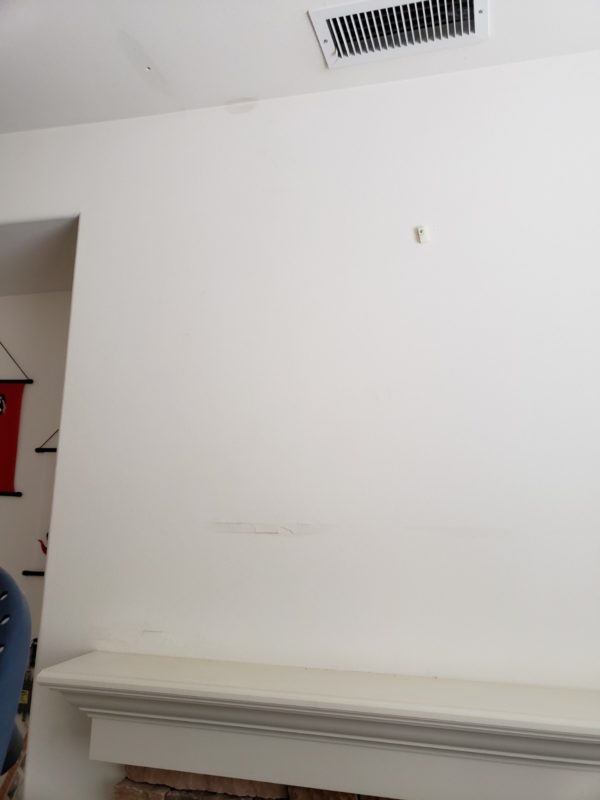Question No. 1
Hi Robert,
I have a quick question for you. In the past, you advised me when I was having my pool replastered, to make sure that they remove all the old plaster down to the Gunite. I am submitting these pictures for you to check out and see if this is what you were referring to. I would appreciate your response.
Thank you,
— Gerrie C.
Answer No. 1
Gerrie,
That’s perfect. The Gunite is exposed and now gives the plaster a good surface to grasp on to. Remember, there are different colors of plaster to choose from. Best of luck.
— Robert

Courtesy photoTo find a leak behind drywall, open the damaged area and, above the leak stain, conduct a water test on the exterior of the house. Lamoureux advises that anyone trying this themselves needs to make sure they take safety precautions if they climb a ladder or go up to the roof.
Question No. 2
Robert,
I live in the Valencia area in a two-story home built around the summer of ’99, original owner.
My wife and I noticed water stains and paint starting to peel near the side of our fireplace on the lower floor, it appears to manifest itself after a heavy rain but quickly dries up.
We’ve inspected the room directly above the fireplace and found no evidence of staining or a leak.
The fireplace has never been used, and short of cutting out large sections of wall board to inspect the area behind the fireplace do you have any recommendations for remediation?
Thanks in advance.
Regards,
— Russell C.
Answer No. 2
Russell,
My recommendation is to open the already damaged drywall in area and conduct a water test starting at the area just above the leak stain on the exterior of the house and working your way up to the roof area.
Please be sure to follow all the ladder and roof safety measures if you are planning to do this work yourself. If you’re not familiar with ladder and roof safety, please have a qualified person do this for you.
With the ceiling and wall area opened, you’ll be able to identify the source of the leak immediately.
If the drywall is in place you won’t be able to tell when it really begins to leak as well as where it’s coming from.
Best of luck.
Please be safe if you decide to climb the roof.
— Robert
Robert Lamoureux has 38 years of experience as a general contractor, with separate licenses in electrical and plumbing contracting. He owns IMS Construction Inc. in Valencia. His opinions are his own, not necessarily those of The Signal. Opinions expressed in this column are not meant to replace the recommendations of a qualified contractor after that contractor has made a thorough visual inspection. Email questions to Robert at [email protected].













